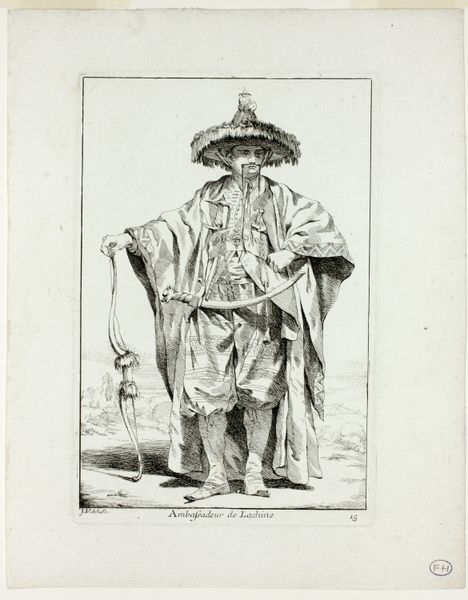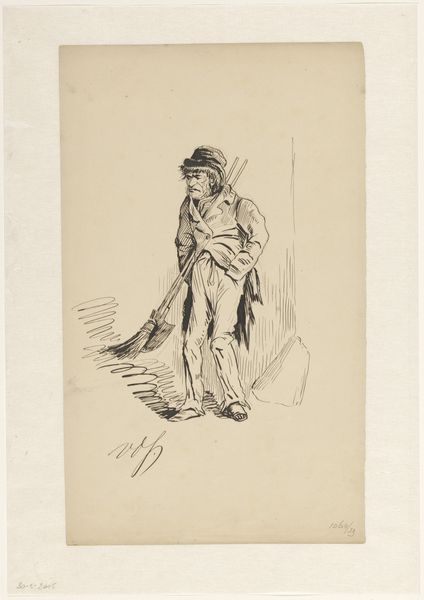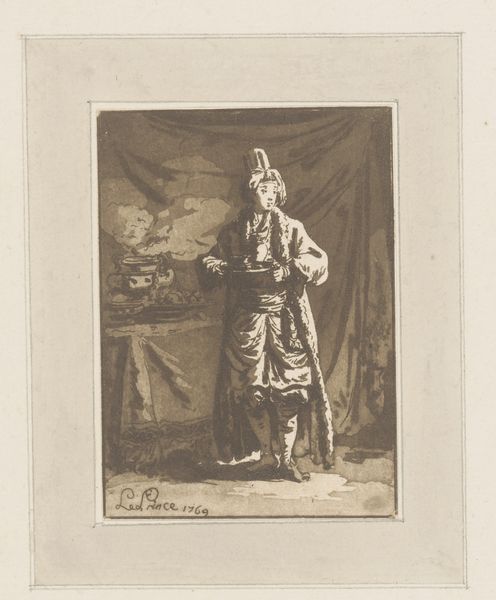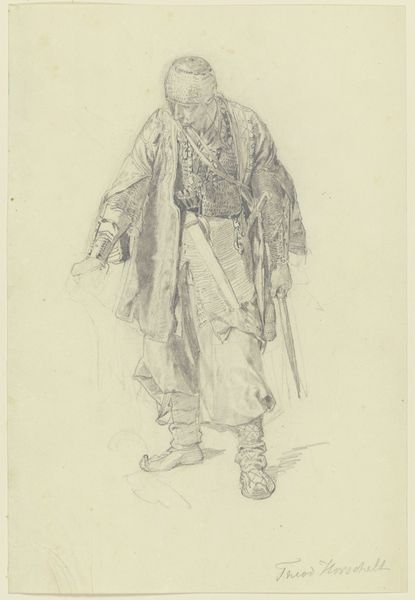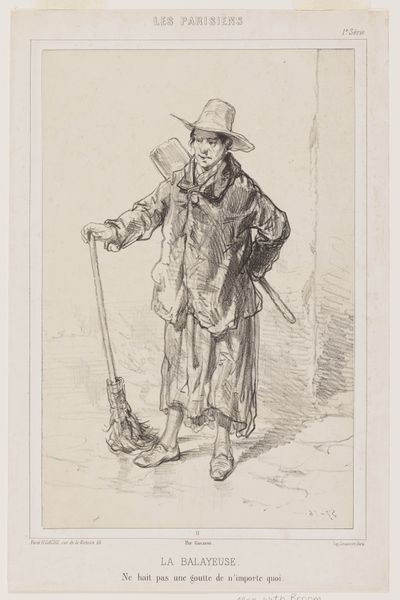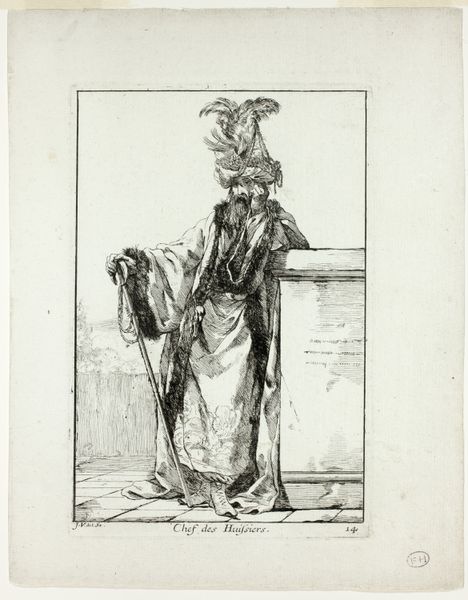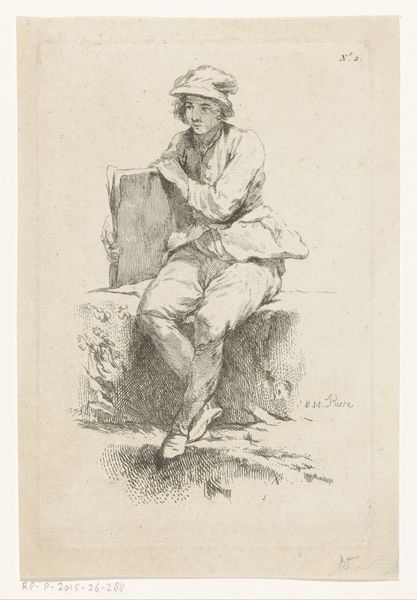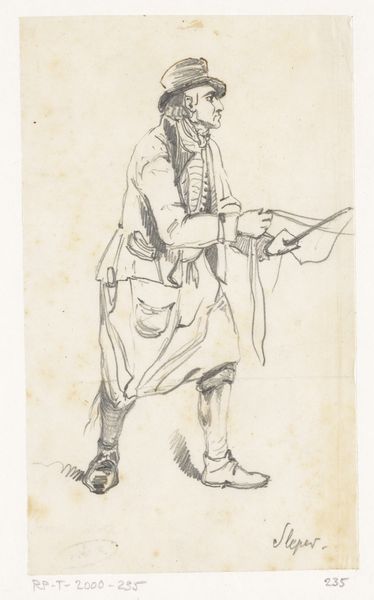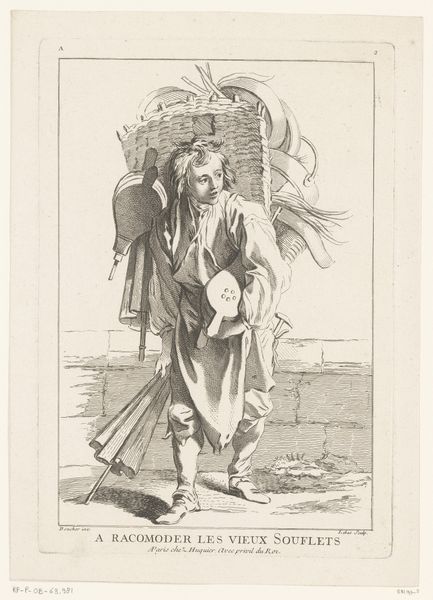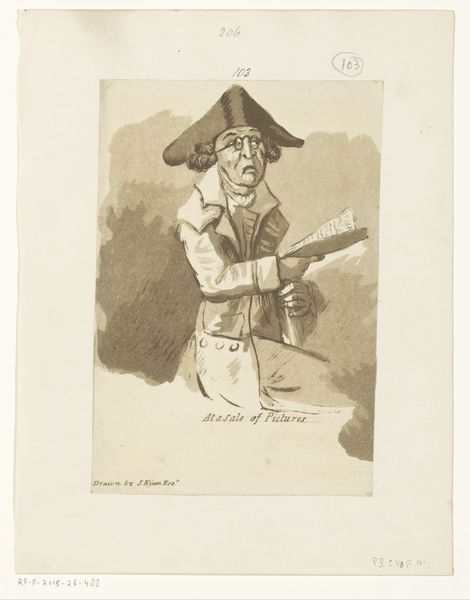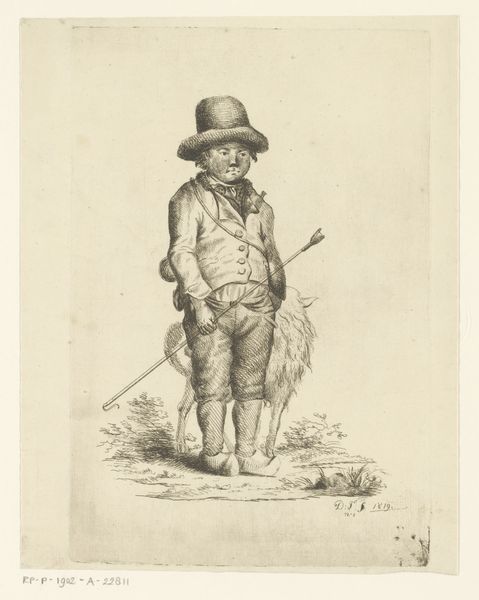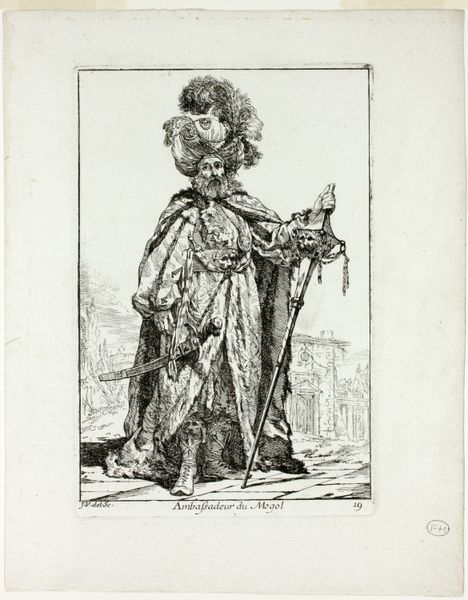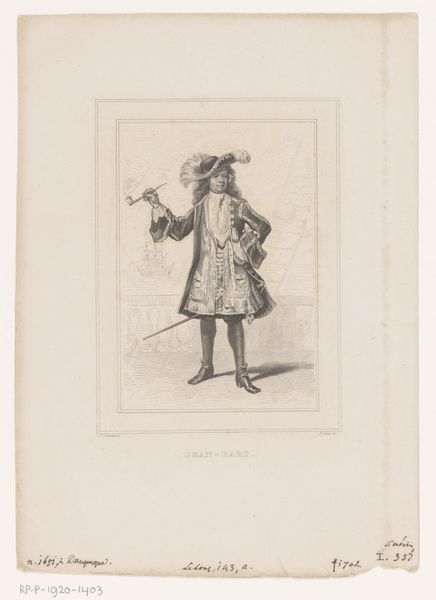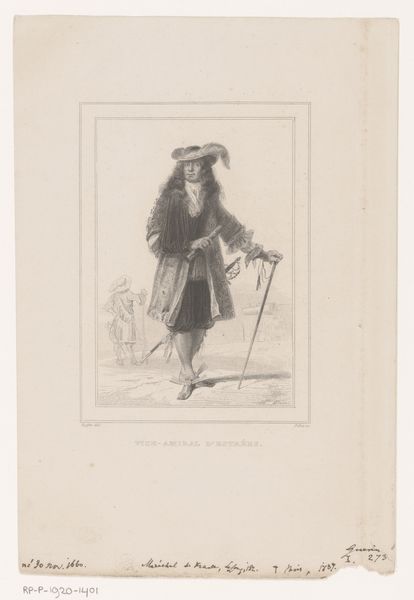
drawing, print, etching, paper
#
portrait
#
drawing
#
baroque
# print
#
etching
#
paper
#
genre-painting
Dimensions: 310 × 262 mm (image); 325 × 269 mm (plate)
Copyright: Public Domain
Curator: Here we have François Boucher's etching, "Man Seated on a Chair," created sometime between 1721 and 1726. It's currently part of the Art Institute of Chicago's collection. Editor: The initial impression is quite striking, almost theatrical. The stark black lines against the pale paper generate a vivid contrast, making the figure both prominent and somewhat haunting. Curator: Indeed, Boucher uses etching masterfully to define the man's form. Note how line direction and density construct volume, particularly in his robe and oversized hat. Editor: I'm drawn to his long flowing hair and hat—an unusual choice which in older iconography represented freedom and a wild nature, though its precise symbolism in this period warrants further inspection. Perhaps an unconventional intellectual? Curator: Semiotically, the staff represents status. Observe, though, its odd placement: it feels more leaned-on than supported by. A signifier of rank perhaps presented without the accompanying power? Editor: That connects with my feeling of internal tension. He appears somewhat melancholic despite the formal attire, his posture slightly slumped, gazing emptily. Is he world-weary? What are we to feel? Curator: The chair too strikes me. Rather a common piece of furniture presented, however, within the constructed elegance of a formal portrait setting. Boucher seems to play upon such formal structures by juxtaposing common object with elegant composition. Editor: It's a clever juxtaposition. I now see more subtly his face isn’t perfectly idealized—subtle flaws adding depth. Are we supposed to question such strict notions of the Baroque? Is Boucher questioning the traditional portrayal of status and character? Curator: Perhaps! The absence of contextual environment reinforces focus on the man, but the composition invites inquiry rather than imparting information about status or historical importance. Editor: Thinking more symbolically about his seated posture within the Age of Enlightenment it might also represent intellectual contemplation...almost like a thinker? Curator: Well put. The genius of art lies, however, in its ambiguous power. Boucher leaves plenty to interpret about this singular figure in thought and pose, leaving it to future viewers like us to decode. Editor: An open question, which is perhaps what I appreciate the most in the art piece itself!
Comments
No comments
Be the first to comment and join the conversation on the ultimate creative platform.
